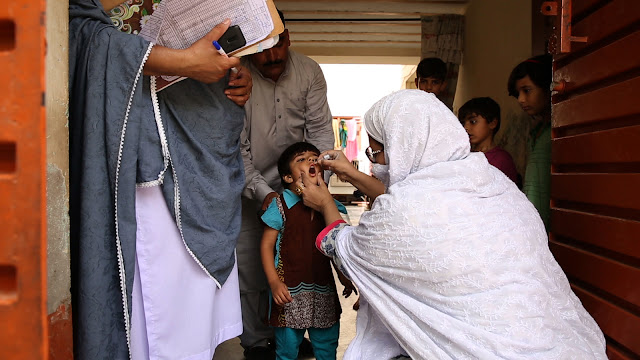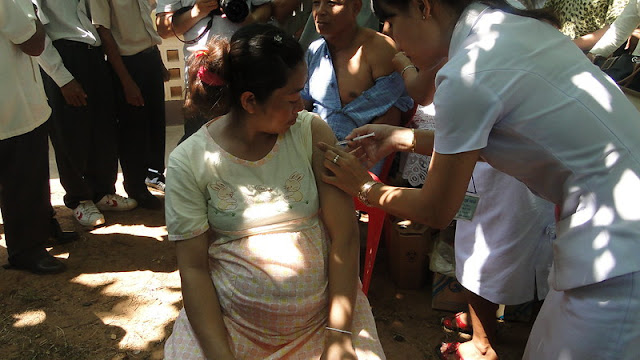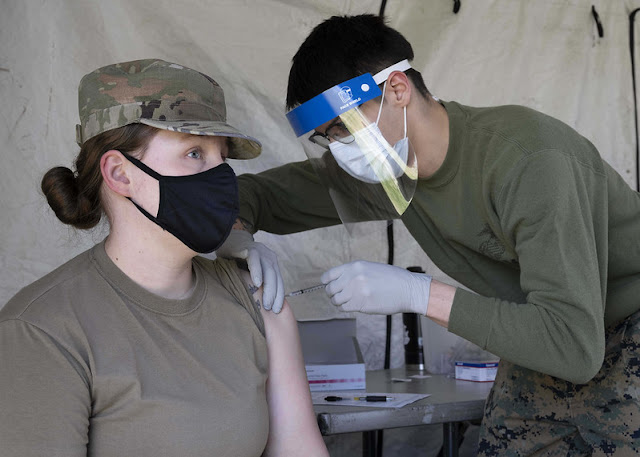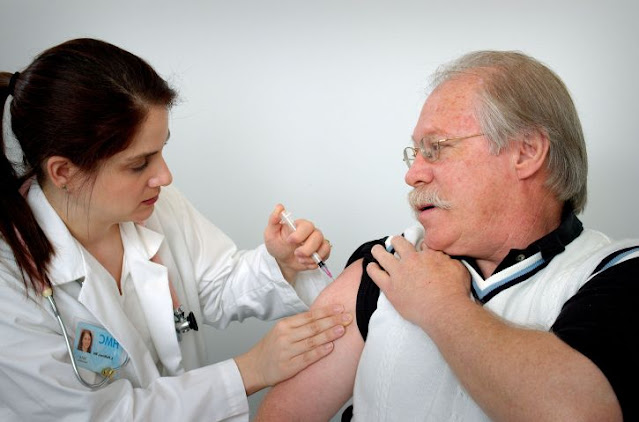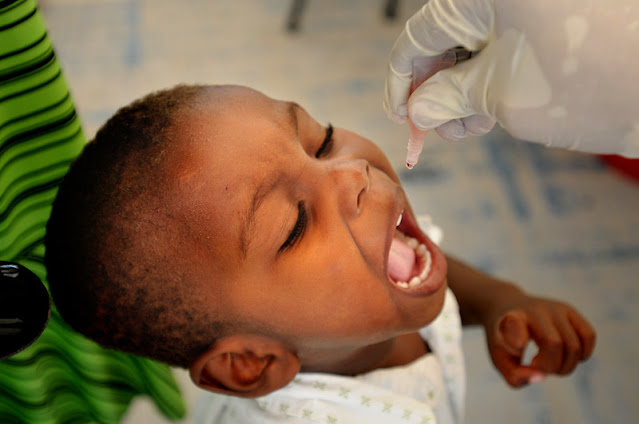What photos should – and shouldn't – be used in public communication about vaccination (e.g., in online news stories or academic presentations), with links to 150 examples of good photos that are open and free to use.
This article was updated on April 24, 2021 to include photos taken during the COVID-19 pandemic.
I originally wrote this article in Serbian. Here's the English translation. If you reprint this article in full or in part, include the link to the source article and state the author of the article (Aleksandra Lazic).
Bad vaccination photos
Bad photos have at least one of these features:
- Visibly distressed persons (e.g., crying, screaming, wincing);
- Needle taking up 50% or more of the photo;
- Needle is the focal point of the photo;
- Multiple needles in one photo.
Neutral photos should also be avoided. They have at least one of these features:
- Vaccine administered with no faces depicted;
- Only vaccine accessories and supplies are depicted.
Even when a photo isn't chosen with the intent to deter people from vaccination, it can negatively affect the audience. To attract readers' attention, the editors of news media often choose photos based on how sensational or artistic they look. In doing so, they usually don't pay attention to how these photos can affect readers' vaccination attitudes.
In October 2020, the city of Novi Sad in Serbia started offering free, voluntary HPV (human papillomavirus) vaccinations to girls. "Portal 021" published a news story about this including a photo of a child's bare upper arm next to an adult's hand holding a syringe with a visible needle. This isn't a good photo for at least two reasons. First – a detailed image of a needle can cause fear. Even though, in general, the fear of needles decreases with increasing age, some adults avoid vaccination (e.g., against the flu) because of this fear. Secondly – the photo is clearly staged and it doesn't even attempt to imitate the real conditions of vaccine administration. It doesn't show faces and it doesn't say anything about the relationship between the depicted individuals. These characteristics don't necessarily make a bad photo. However, such a photo doesn't provoke a positive emotional reaction and it doesn't add meaning to the information; as such, it doesn't help the reader identify with the story and it doesn't help them engage with the decision-making process.
Apart from needles that can cause fear, photos of screaming or crying children can also trigger a strong negative emotional reaction. For example, a news story from "Nova.rs", about vaccination during the COVID-19 pandemic, contains such a photo. Although it's normal for children to get cranky when visiting the hospital, emphasizing this experience might negatively affect the audience. Materials that appeal to emotions can cloud our understanding of objective, scientific facts and can lead us to conclude that the risk of vaccination is higher than we would have concluded in the absence of such materials. Inaccurate photos are bad photos, too. They may depict an incorrect vaccination site or depict vaccine accessories or supplies (e.g., syringe, needle, vaccine vials) with incorrect features (e.g., an overly large needle).
Good vaccination photos
Good photos have at least one of these features:
- Visibly happy/calm persons;
- Depiction of a dialogue with the health provider.
I believe that, whenever possible, a good photo should also be adapted to the culture of the target audience and that it should depict persons the audience finds easy to identify with.
A good photo should portray positive states such as happiness or calmness. Whenever possible, the relationships of the persons in the photo should be depicted (e.g., the health-care worker and the person who is receiving the vaccine are having a calm conversation; the parent is smiling at the child while the vaccine is being administered). A good photo is also an accurate one – it depicts the correct vaccination site and it depicts vaccine accessories or supplies with correct features.
If used moderately and cautiously, telling stories about real people and their experiences can be a good tool for communicating about science, health, and vaccines to the public. Presenting images alongside text can make these stories more persuasive and realistic. Furthermore, a photo can itself tell a story. This means that the photo shouldn't stop at depicting the faces of those who administer the vaccine and those who receive it. The persons in the photo should share relevant characteristics with the target audience and belong to its socio-cultural community. In other words, the photo should enable the reader to easily identify with the depicted persons based on shared characteristics such as age, sex, gender, ethnicity, profession, occupation, living conditions, religious affiliation, social customs...
A photo will be even better at telling stories if it places the persons in a wider context. For example, the photo can illustrate the fact that vaccine administration takes place in various settings: hospitals, schools, workplaces, mobile vaccination clinics, people's homes, asylum and reception centers... The photo can also depict persons accompanying patients receiving the vaccine, such as parents, siblings, spouses, partners, friends... Apart from the act of the injection itself, the photo can also depict what happens before (e.g., pre-vaccination medical screening or a conversation with the nurse) and after it (e.g., applying the bandage or gauze to the vaccination site).
Examples of good photos
Here are more than 150 examples of photos that should be used in public communication about vaccination (e.g., in online news stories or academic presentations).
The source and/or the author as well as terms of use are displayed below each photo. All photos are free of cost and free to use either only for non-commercial or for both commercial and non-commercial purposes; sometimes, there are other additional terms of use. Please use the photos according to their license terms. Using the links below the photo, you can download the photo, learn more about the context in which it was taken, and learn more about the specific terms of use.
I identified the photos by searching the CDC Public Health Image Library, CC Search, Flickr, Unsplash, Pixnio, Freepik,
Wikimedia Commons, and Google Images (with the Creative Commons filter), on October 9 and 10, 2020 and in April, 2021.
 |
Other versions of this photo: [1] [2]
|
 |
Other versions of this photo: [1]
 | Author/Source: CDC. Via Unsplash. Terms of Use: Unsplash licence.
 | Other versions of this photo: [1] [2] [3]
Other versions of this photo: [1]
Other versions of this photo: [1]
Other versions of this photo: [1]
Other versions of this photo: [1]
|
|

Other versions of this photo: [1]
Other versions of this photo: [1]
Other versions of this photo: [1]
Other versions of this photo: [1]
|
|
|
|
Author/Source: CDC. Terms of Use: Public Domain.
Author/Source: CDC. Terms of Use: Public Domain.
Author/Source: CDC. Terms of Use: Public Domain.
Author/Source: CDC. Terms of Use: Public Domain.
Author/Source: CDC. Terms of Use: Public Domain.
Author/Source: CDC. Terms of Use: Public Domain.
Author/Source: CDC. Terms of Use: Public Domain.
Author/Source: CDC. Terms of Use: Public Domain.
Author/Source: CDC. Terms of Use: Public Domain. Author/Source: CDC. Terms of Use: Public Domain.
Author/Source: CDC. Terms of Use: Public Domain.

























